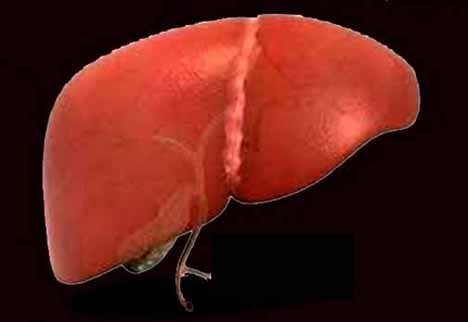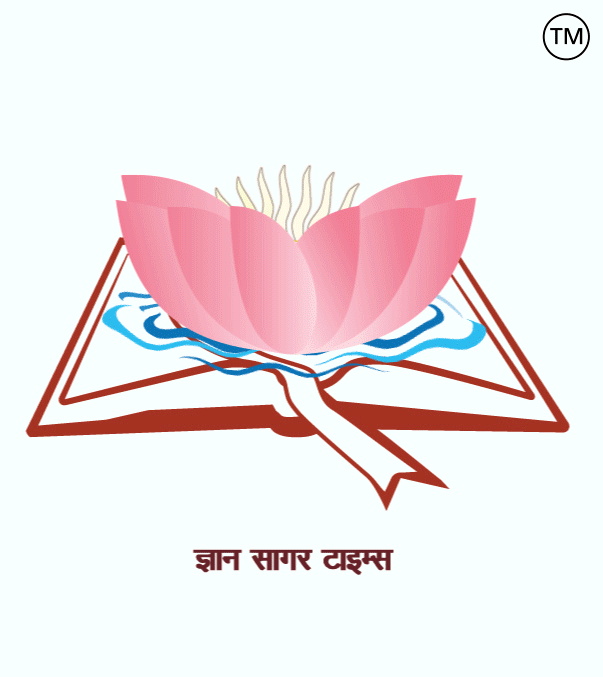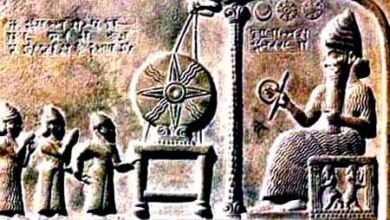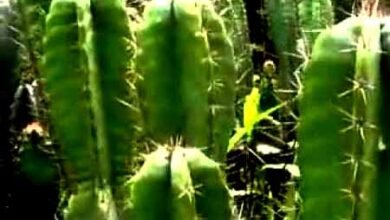
|
1. Names of stomach and pharynx and obstruction found at the site of gastric and Spphincter? = Oesophageal obstruction and gastric outlet obstruction. 2. Which part of the alimentary canal causes the highest digestion and absorption of food? = By small intestine. 3. What is the first and the smallest part of the small intestine? = Duodenum. 4. What is the main function of the large intestine? = Absorbing water and mineral salts and excreting undigested food from the anus. 5. In how many parts of an intestine can be differentiated? = In 04 parts –a. The ascending colon, b. Transverse colon, c. Descending colon and d. Sigmoid colon. 6. The names of the sphincter found in an anal canal? = Exo and endo sphincters. 7. Names of salivary glands? = Parotid glands, sub-mandibular salivary glands and sublingual glands. 8. Name of a compound gland? = Pancreas gland (It secretes insulin and glucagon hormones as the endocrine gland and secretes pancreatic juice as the exocrine gland.) 9. Name of the largest gland of the human body.? = Liver. 10. Names of structural and functional units of liver? = Hepatic lobules (their number is about one lac). 11. How does food reach the Pharynx from the oesophagus to the stomach? = in the form of a bolus. 12. Name the cells found in the stomach that secrete hydrochloric acid (HCL), mucus (mucus) and pepsinogen. ? = Parietal cells or oxyntic cells, Mucus cells, Gastric Chief cells or Peptic cells. 13. How does food come from the stomach into the small intestine? = As chyme. 14. Two functions of Bile? = 1. Emulsification of fat, 2. Activating lipase enzyme. 15. By what name is the special period in which reproductive cells develop for sexual reproduction in humans? = Puberty. 16. What sex hormones are produced in male and female humans? = Testosterone in males and estrogen and progesterone hormones in females. 17. Name of primary sexual organs found in male and female humans.? = Testes in male and ovary in female. 18. Name the walnut-like exocrine gland found in male humans whose secretion triggers sperm.? = Prostate gland. 19. Which structure does the vas does the vas deferens together with the vas deferens form? = Ejaculatory duct. 20. What is a gametes generation? = The process of formation of haploid gametes in the testis and ovaries is called Gametogenesis. 21.What is spermatogenesis? = The process of producing sperm in the testis is called spermatogenesis. 22. What is oogenesis? = The process of formation of ova/eggs (female gametes) in the ovary is called Oogenesis. 23. What is fertilization? = The process of formation of a zygote by the fusion of male gametes (sperm) and female gametes (ovum) is called fertilization. 24. What are the ductless glands that secrete hormones? = Endocrine glands. 25. The system that coordinates between different organs of human beings and between organs and the environment and also controls the functions of organs.? = Nervous system. 26. How many types of nerves does the peripheral nervous system consist of? = Two types – a. Sensory of Afferent nerves, b. Motor nerves of Efferent nerves. 27. Name and weight of the most complex body part.? = Brain, weight – about 1. 5 kg. 28. Which fluid is filled between the veins of the brain? = Cerebrospinal fluid. 29. What is Corpus Callosum? = A large bundle of nerve fibres that connects the two brain hemispheres. 30. Where is the hypothalamus located? = in the ventral brain above the pituitary glands and below the third ventricle.
Dr. (Prof.) Amarendra Kumar ========== ========= =========== जीव विज्ञान से संबंधित-153.
1. आमाशय व ग्रसिका तथा आमाशय व ग्रहण के संधि स्थल पर पायी जाने वाली अवरोधिनियों के नाम? = ग्रास नलिका अवरोधनी एवं जठर निर्गमीय अवरोधिनी. 2. आहार नाल के किस भाग द्वारा भोजन का सर्वाधिक पाचन एवं अवशोषण होता है? = छोटी आंत्र द्वारा. 3. छोटी आंत्र का पहला एवं सबसे छोटा भाग कौनसा होता है? = ग्रहणी (Duodenum). 4. बड़ी आंत्र का मुख्य कार्य क्या है? = जल व खनिज लवणों का अवशोषण करना तथा अपाचित भोजन को मलद्वार से उत्सर्जित करना. 5. वृहदान्त्र को कितने भागों में विभेदित किया जा सकता है? = चार भागों में – 1. आरोही वृहदान्त्र , 2. अनुप्रस्थ वृहदान्त्र , 3 . अवरोही वृहदान्त्र , 4 . सिग्माकार वृहदान्त्र. 6. गुदानाल में पायी जाने वाली संवरणी के नाम? = बहिः एवं अन्त: संवरणी (Sphincters). 7. लार ग्रंथियों के नाम? = 1. कर्णपूर्व ग्रंथि , 2 . अधोजंम लार ग्रंथि , 3 . अधोजिहवा ग्रंथि. 8. एक मिश्रित ग्रंथि का नाम? = अग्नाशय ग्रंथि (यह अन्तःस्रावी ग्रंथि के रूप में इन्सुलिन व ग्लुकेगोन हार्मोन का स्रावण करती है तथा बहि: स्रावी ग्रंथि के रूप में अग्नाशय रस स्रावित करती है.) 9. मानव शरीर की सबसे बड़ी ग्रंथि का नाम? = यकृत. 10. यकृत की संरचनात्मक एवं कार्यात्मक इकाईयों के नाम? = यकृत पालिकाएँ(इनकी संख्या करीब एक लाख होती है.) 11. भोजन किस रूप में ग्रसनी से ग्रसिका में तथा ग्रसिका से आमाशय में पहुंचता है? = बोलस के रूप में. 12. आमाशय में पायी जाने वाली उन कोशिकाओं के नाम लिखिए जिनसे हाइड्रोक्लोरिक अम्ल ( HCL ) , श्लेष्मा ( म्यूकस ) व पेप्सिनोजन स्रावित होता है? = ऑक्सिन्टिक कोशिकाएँ , श्लेष्मा ग्रीवा कोशिकाएँ , पेप्टिक कोशिकाएँ 13. आमाशय से भोजन किस रूप में छोटी आंत्र में आता है? = काइम (Chyme) के रूप में. 14. पित के दो कार्य? =1. वसा की पायसीकरण करना , 2 . लाइपेज एन्जाइम को सक्रिय करना. 15. मनुष्य में लैंगिक जनन हेतु जनन कोशिकाओं का विकास जिस विशेष अवधि में होता है उसे किस नाम से जाना जाता है? = यौवनारंभ (Puberty). 16. नर व मादा मनुष्य में कौन-सा सेक्स हार्मोन उत्पन्न होता है? = नर में टेस्टोस्टेरोन तथा मादा में एस्ट्रोजन व प्राजेस्टेरोन हार्मोन. 17. नर व मादा मनुष्य में पाये जाने वाले प्राथमिक लैंगिक अंगों के नाम?= नर में वृषण तथा मादा में अण्डाशय. 18. नर मनुष्य में पायी जाने वाली अखरोट समान बहिःस्रावी ग्रंथि का नाम लिखिए जिसका स्राव शुक्राणुओं को गति प्रदान करता है?= प्रोस्टेट ग्रंथि. 19. शुक्रवाहिनी शुक्राशय के साथ मिलकर कौनसी रचना बनाती है? = स्खलन वाहिनी (Ejaculatory duct). 20. युग्मक जनन किसे कहते हैं? = वृषण व अण्डाश्य में अगुणित युग्मकों के निर्माण की प्रक्रिया को युग्मकजनन कहा जाता हैं. 21. शुक्रजनन किसे कहते हैं? = वृषण में शुक्राणुओं के निर्माण की प्रक्रिया को शुक्रजनन कहते हैं. 22. अण्डजनन किसे कहते हैं? = अण्डाशय में अण्डाणुओ ( युग्मकों ) के निर्माण की प्रक्रिया को अण्डजनन कहा जाता हैं. 23. निषेचन किसे कहते हैं? = नर युग्मक ( शुक्राणु ) एवं मादा युग्मक ( अण्डाणु ) के संयुग्मन द्वारा युग्मनज निर्माण की क्रिया को निषेचन कहा जाता हैं. 24. नलिका विहीन ग्रंथियां जो हार्मोन स्रावित करती हैं, उन्हें क्या कहते हैं? = अन्तःस्रावी ग्रंथियां. 25. वह तंत्र जो मनुष्य के विभिन्न अंगों के बीच तथा अंगों व वातावरण बीच सामंजस्य स्थापित करता है और साथ ही अंगों के कार्यों को भी नियंत्रित करता है उसे? = तंत्रिका तंत्र. 26. परिधीय तंत्रिका तंत्र कितने प्रकार की तंत्रिकाओं से मिलकर बना होता है? = दो प्रकार की – 1. संवेदी या अभिवाही , 2 . प्रेरक या अपवाहीं तंत्रिका. 27. शरीर के सबसे अधिक जटिल अंग का नाम व वजन? = मस्तिष्क, वजन – लगभग 1.5 किग्रा. 28. मस्तिष्क के आवरणों के बीच कौनसा द्रव भरा रहता है? = मस्तिष्क मेरू द्रव्य. 29. कार्पस केलोसम क्या है? = दोनों प्रमस्तिष्क गौलार्धों को जोड़ने वाली पट्टी. 30. हाइपोथेलेमस कहां स्थित होता है? = अग्र मस्तिष्क के डाइएनसीफेलान भाग पर.
डॉ. (प्रो.) अमरेंद्र कुमार
|






